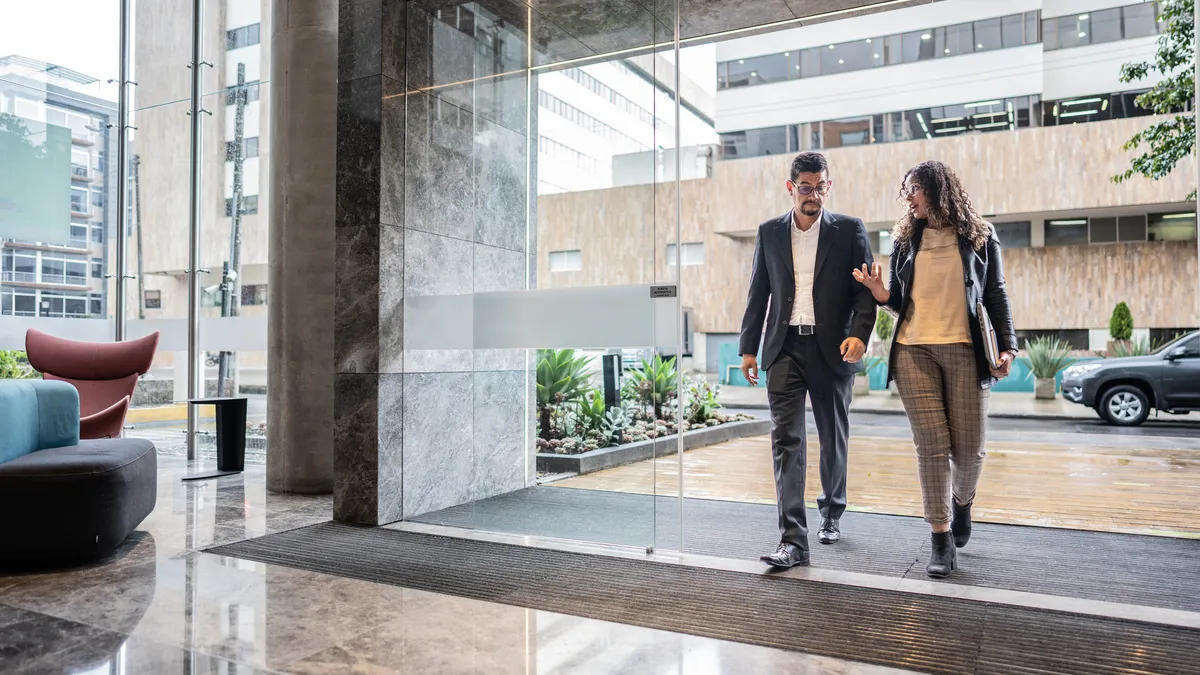Dive Brief:
- Net absorption for the office sector remains negative, with more office space being vacated than occupied in the second quarter and vacancy rates reaching a record-high of 13.8%, according to the National Association of Realtors.
- The increase in unoccupied spaces has slowed down, however. While the surplus of unoccupied spaces exceeded 61 million square feet at the start of 2024, net absorption “improved to -42 million square feet, a 1% decrease from a year ago,” NAR says. Although the NAR says leasing activity is currently near pandemic levels and about 40 percentage points below pre-pandemic levels, a researcher at CBRE forecasts growth in U.S. office portfolios ahead.
- “Portfolios are going to remain stable or even grow over the next three years, which is a significant shift than what we saw pre-pandemic, where sentiment was largely leaning toward contraction,” said Jessica Morin, director of U.S. office research at CBRE, during the company’s 2024 Midyear Global Real Estate Market Outlook presentation.
Dive Insight:
Office utilization in the U.S. has largely stabilized to just under three days a week, but there is a “significant difference in movement within peak days,” Morin said, noting these days are typically Tuesdays and Wednesdays. “Attendance on these days is pretty much on par with what we saw pre-pandemic, so it’s essentially full. However, we do still see that throughout the week there is lower attendance than where we were pre-pandemic.”
With hybrid work models and return-to-office efforts in full effect, office foot traffic is up 21% from this time last year, according to Envoy. The workplace management and analytics firm says that the strong surge of workplace traffic in the second half of 2023 has continued into 2024, “signaling that physical workplaces will continue to thrive.”
While Philadelphia has led the U.S. in heightened workplace entries, up 34% year over year, many other cities have seen growth this year, compared with 2023, according to Envoy. Foot traffic in Chicago has grown 27% year over year, with increases of over 20% also occurring in Houston, San Francisco and Dallas and growth rates of over 10% in Miami, Atlanta and Los Angeles, Envoy Head of Data Analytics Jonathan Weindel wrote in an August 1 blog post.
Morin said future growth in leasing volume will come from “the smallest companies,” with those organizations expected to continue driving a lot of the overall leasing volume. Morin noted that “the type of space companies are looking for is also different than it was pre-pandemic.”
“It’s stronger towards that flight to quality. We have this prime office set that represents the top 8% of office space in the U.S.,” Morin said. “The vacancy rate for prime buildings is four and a half percentage points below non-prime buildings.”
Morin added that prime buildings also command a rent premium of more than 80% compared with non-prime buildings, presenting a wider margin than shown pre-pandemic. A substantial drop in new supply is contributing to the expectation that vacancy rates for prime office spaces will return to pre-pandemic levels by 2027, based on a conservative forecast, Morin said.













